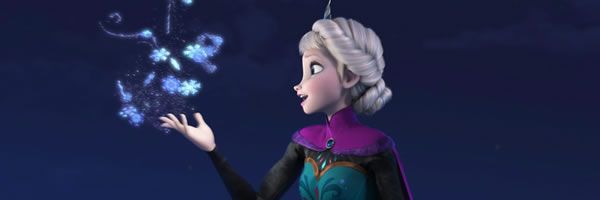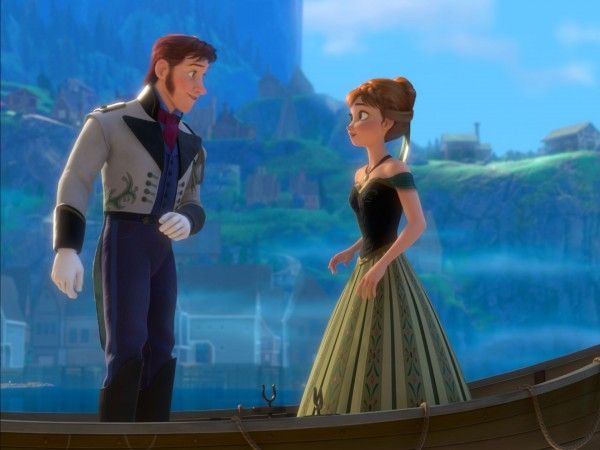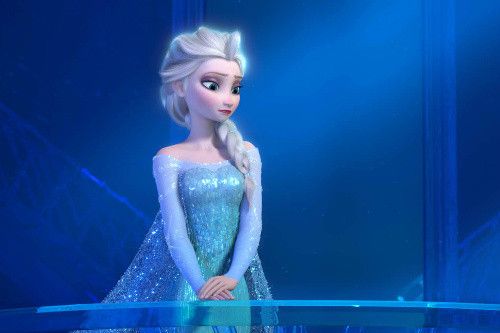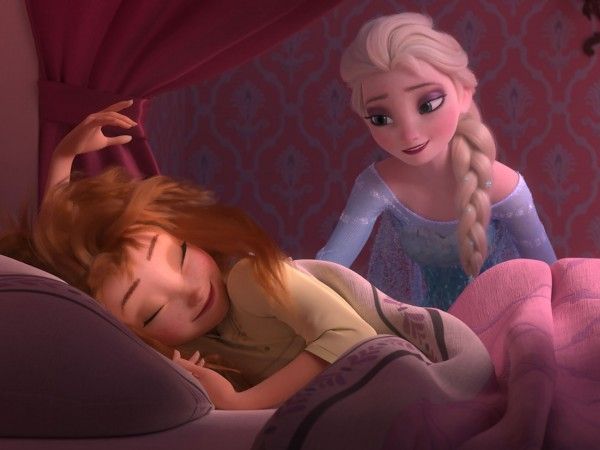“A ruler with a frozen heart will bring destruction to the kingdom of Arendelle.” Such is the prophecy that spurs the action of Disney's smash sensation Frozen. The semi-subversive story of sisterhood, adorable snowmen, and earworm songs earned the studio more than $1 billion dollars at the worldwide box office and naturally there's already a sequel on the way, but producer Peter Del Vecho revealed to EW that the film originally had a much more traditional ending, and it's not nearly as good as what they ended up with.
Once upon a time, the early drafts of Frozen built up Elsa as a more straightforward villain, heavily inspired by Hans Christen Anderson and pulled right from the classic model of Disney's female baddies. For one thing, Anna and Elsa weren't even related, but equally different, Elsa was depicted as a scorned woman who was stood up at the altar, freezing her heart so she became incapable of love. Snooze. Been there, done that.
And the creative team thought the same thing,
“The problem was that we felt like we had seen it before,” Del Vecho explained. “It wasn’t satisfying. We had no emotional connection to Elsa — we didn’t care about her because she had spent the whole movie being the villain. We weren’t drawn in. The characters weren’t relatable.”
However, the film did still have the twist that it was never really Elsa who was the true villain, it was always the self-adoring Prince Hans. In the original ending, Elsa created an army of snow monsters and Kristoff has a "Han Solo moment" where he comes to Anna's rescue. Enter Hans, the two-faced prince who DGAF about anyone that isn't him. To stop Elsa's army, Hans triggers a massive avalanche, undeterred by the fact that it could kill Anna and all of Arendelle. The prophecy was never about Elsa, it was about Hans, an unfeeling man with a "frozen heart." Anna convinces Elsa to save the kingdom and Elsa's heart thaws, allowing her to love again.
It's a sweet ending but it lacks the punch of Frozen's ultimate tale of sisterhood, a rare female-centric story in which the primary relationships aren't built around men, but the strength of the female bond.
“One of the things Chris Buck had in most versions of the film was a moment where Anna’s heart was frozen and needed to be thawed. Chris said, ‘Does it always need to be true love’s kiss that solves that problem? Does it always have to be the man who comes in and rescues the female? Could it be something different?’ and that led to a different ending. Now that they’re related, Elsa had her own fear and it was Anna who would save the day instead of Elsa by rescuing her sister — and it would be that selfless act that thawed Elsa’s heart."
But making them sisters also served another purpose, that helped them understand the character from a new angle and allowed her to become much more complex.
“Making them related led us to the idea of her living in fear of her powers,” Del Vecho says. “What if she’s afraid of who she is? And afraid of hurting the ones she loves? Now we had a character in Anna who was all about love and Elsa who was all about fear. That led to making Elsa a much more dimensional sympathetic character, and instead of the traditional good vs. evil theme we had one that we felt was more relatable: Love vs. fear, and the premise of the movie became that love is stronger than fear.”
For more details on how Frozen evolved, check out the full report over at EW. Considering that billion dollar payoff, I'm going to go ahead and say the creative team made the right call. The world doesn't need anymore traditional fairy tales, not only because they have some troubling gender dynamics, but because they've been done a thousand times before. The willingness to shake things up and reinvent the mold is exactly why Disney is still the reigning king of the family entertainment after all these decades. And yup, now "Let It Go" is stuck in my head.




